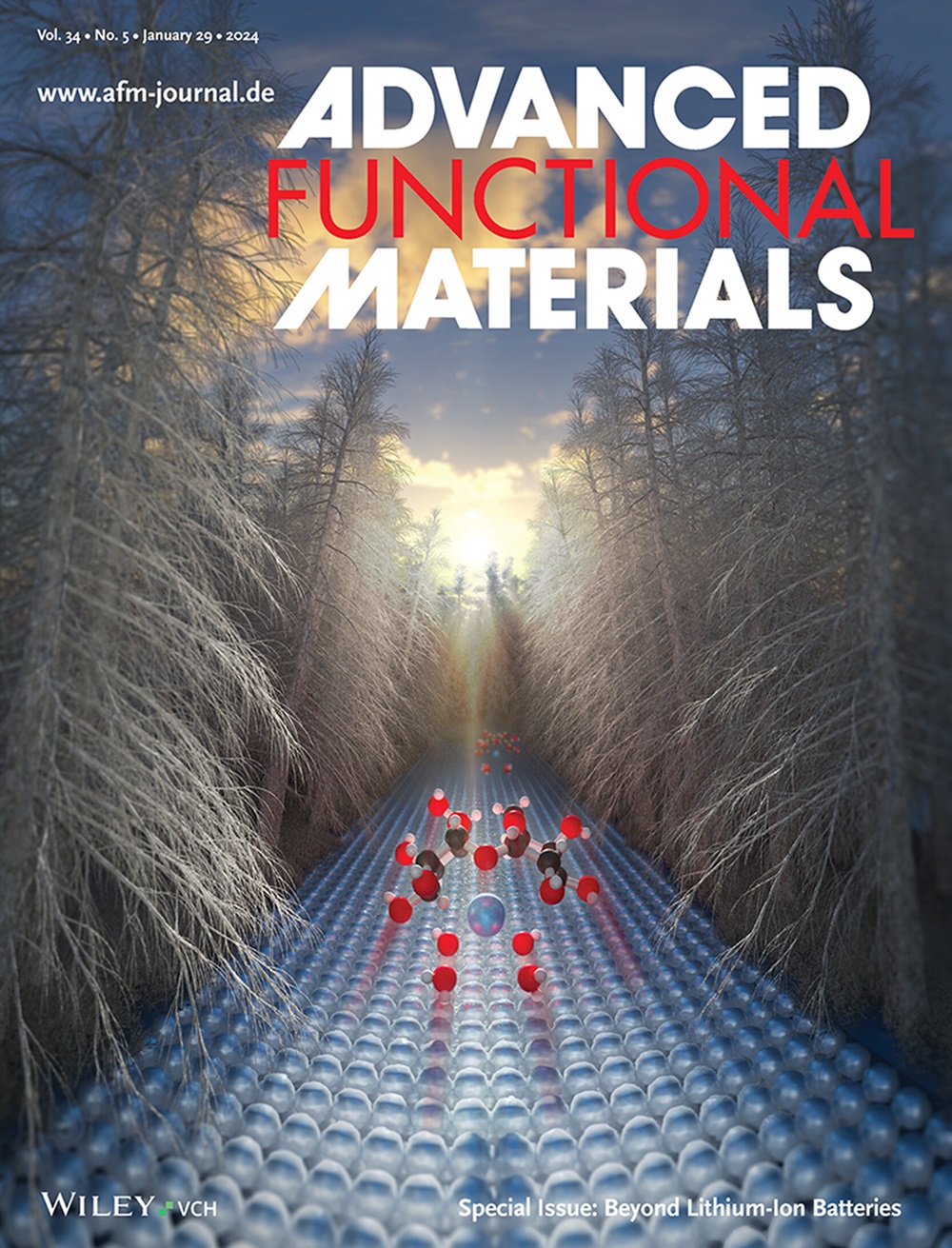IF 18.5
1区 材料科学
Q1 CHEMISTRY, MULTIDISCIPLINARY
引用次数: 0
摘要
基于 T 细胞的适应疗法已成为治疗各种疾病的有效疗法。它包括通过人工抗原递呈细胞(aAPC)在体外激活 T 细胞。然而,传统的人工抗原递呈细胞(aAPC)系统面临着生物降解性差、载货能力有限、制造程序复杂等限制。在这种情况下,微胶囊系统凭借其独特的核壳结构和简单的功能化,为制造人工细胞提供了一种前景广阔的替代方案。尽管微胶囊系统具有潜力,但现有的微胶囊系统通常依赖有毒化学品或苛刻的制造条件。受海洋生物如何利用生物分子创造二氧化硅结构的启发,这项研究开发了一种通用的生物仿生策略,利用乳液模板在良性条件下制造二氧化硅微胶囊(SMC)。这些 SMCs 装载了疏水性荧光染料,便于追踪;装载了磁性纳米粒子,便于分离和操作。与市面上销售的 Dynabeads 相比,基于 SMC 的新型 aAPC(SMC-aAPC)具有更出色的 T 细胞活化能力。这项创新为先进的免疫疗法和基于细胞的治疗开辟了令人兴奋的新可能性。本文章由计算机程序翻译,如有差异,请以英文原文为准。

A Universal Biomimetic Approach for Making Artificial Antigen-Presenting Cells for T Cell Activation
T cells based-adoptive therapy has emerged as an effective therapy for treating various diseases. It involves the activation of T cells in vitro via artificial antigen presenting cells (aAPCs). However, conventional aAPC systems face limitations such as poor biodegradability, limited cargo capacity, and complex fabrication procedures. In this context, microcapsule systems offer a promising alternative for creating artificial cells, thanks to their distinctive core-shell architecture and straightforward functionalization. Despite their potential, existing microcapsule systems often rely on toxic chemicals or harsh conditions for fabrication. Inspired by how marine organisms use biomolecules to create silica structure, the study develops a universal biomimetic strategy to fabricate silica microcapsules (SMCs) using emulsion templates under benign conditions. These SMCs are loaded with hydrophobic fluorescent dyes for tracking and magnetic nanoparticles for easy separation and manipulation, and they can be surface-modified with antibodies to function as aAPCs. The novel SMC-based aAPC (SMC-aAPC) demonstrates superior T cell activation compared to commercially available Dynabeads. This innovation opens up exciting new possibilities for advanced immunotherapy and cell-based treatments.
求助全文
通过发布文献求助,成功后即可免费获取论文全文。
去求助
来源期刊

Advanced Functional Materials
工程技术-材料科学:综合
CiteScore
29.50
自引率
4.20%
发文量
2086
审稿时长
2.1 months
期刊介绍:
Firmly established as a top-tier materials science journal, Advanced Functional Materials reports breakthrough research in all aspects of materials science, including nanotechnology, chemistry, physics, and biology every week.
Advanced Functional Materials is known for its rapid and fair peer review, quality content, and high impact, making it the first choice of the international materials science community.
 求助内容:
求助内容: 应助结果提醒方式:
应助结果提醒方式:


